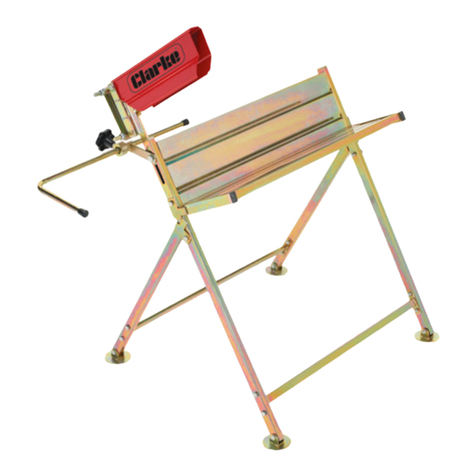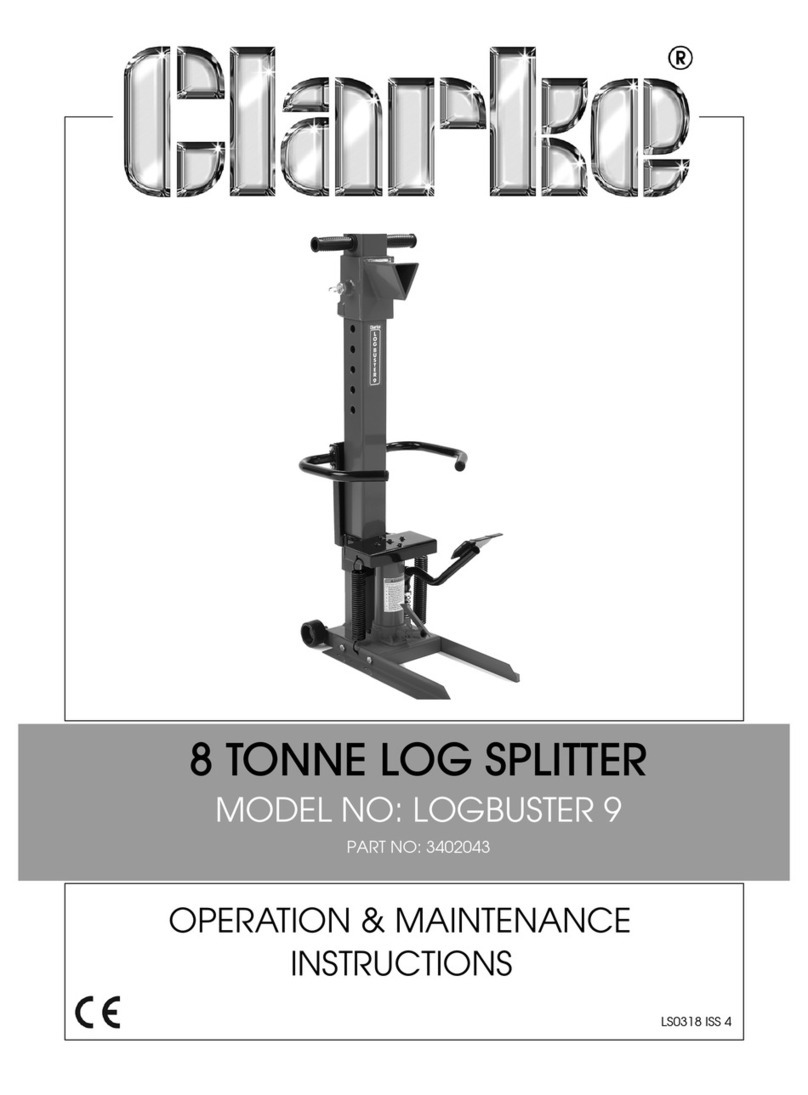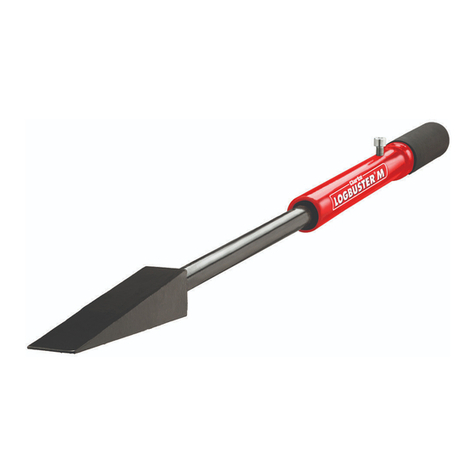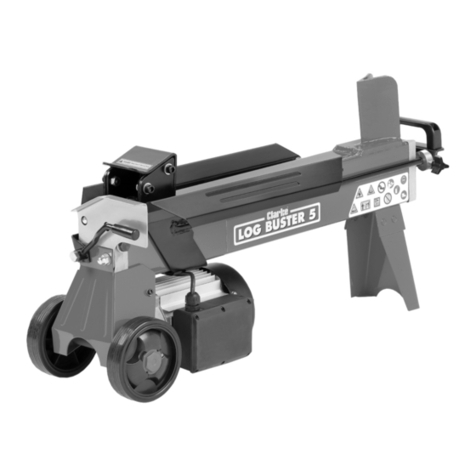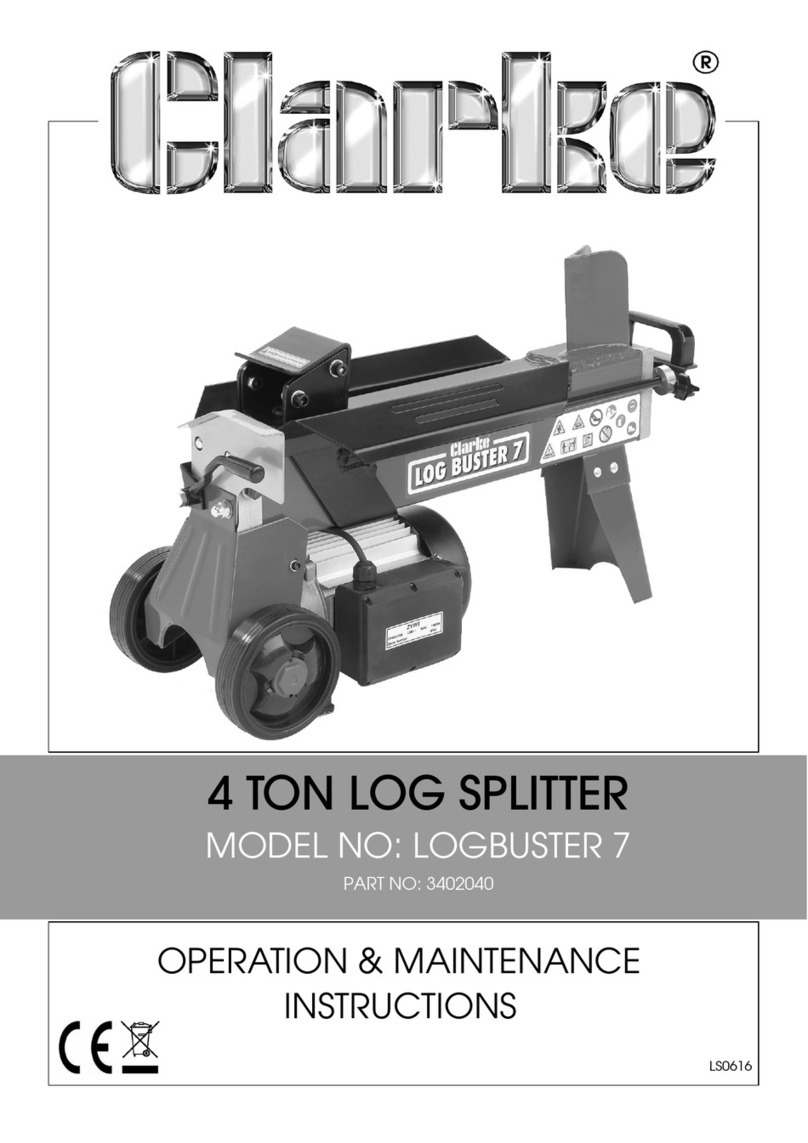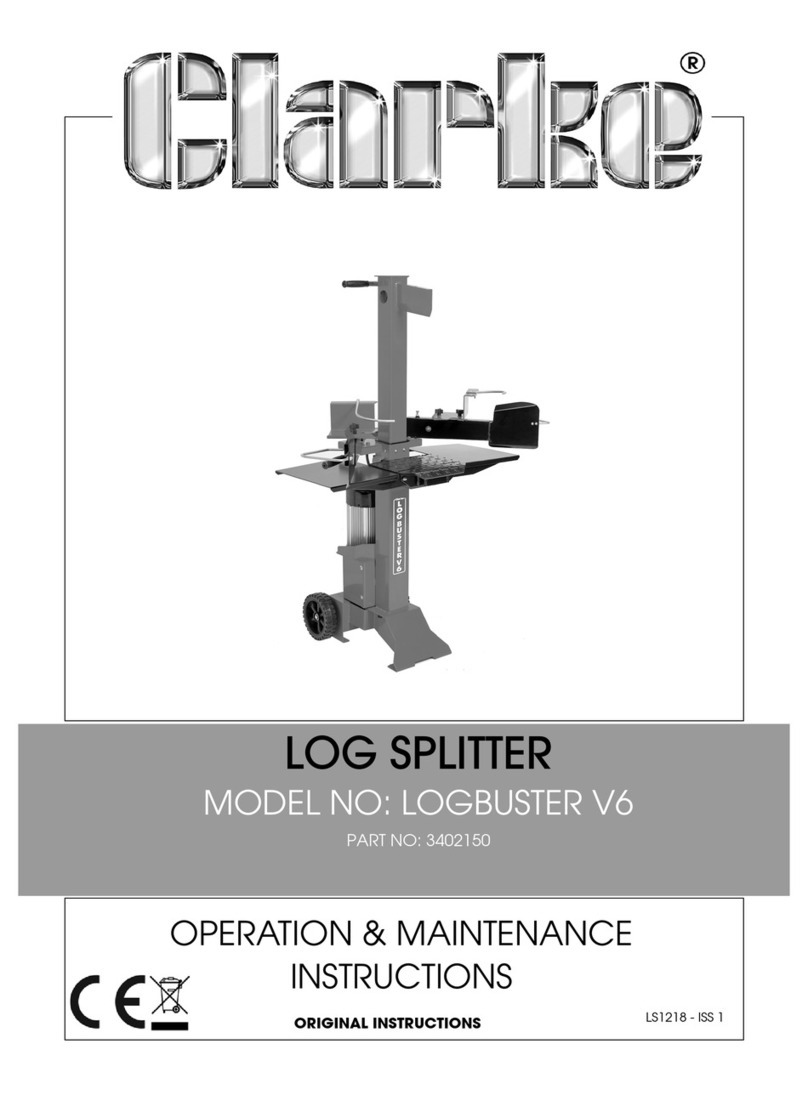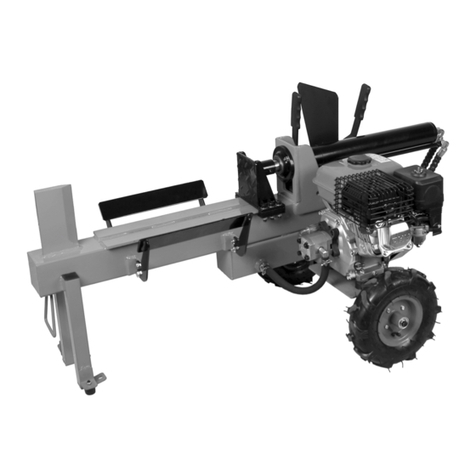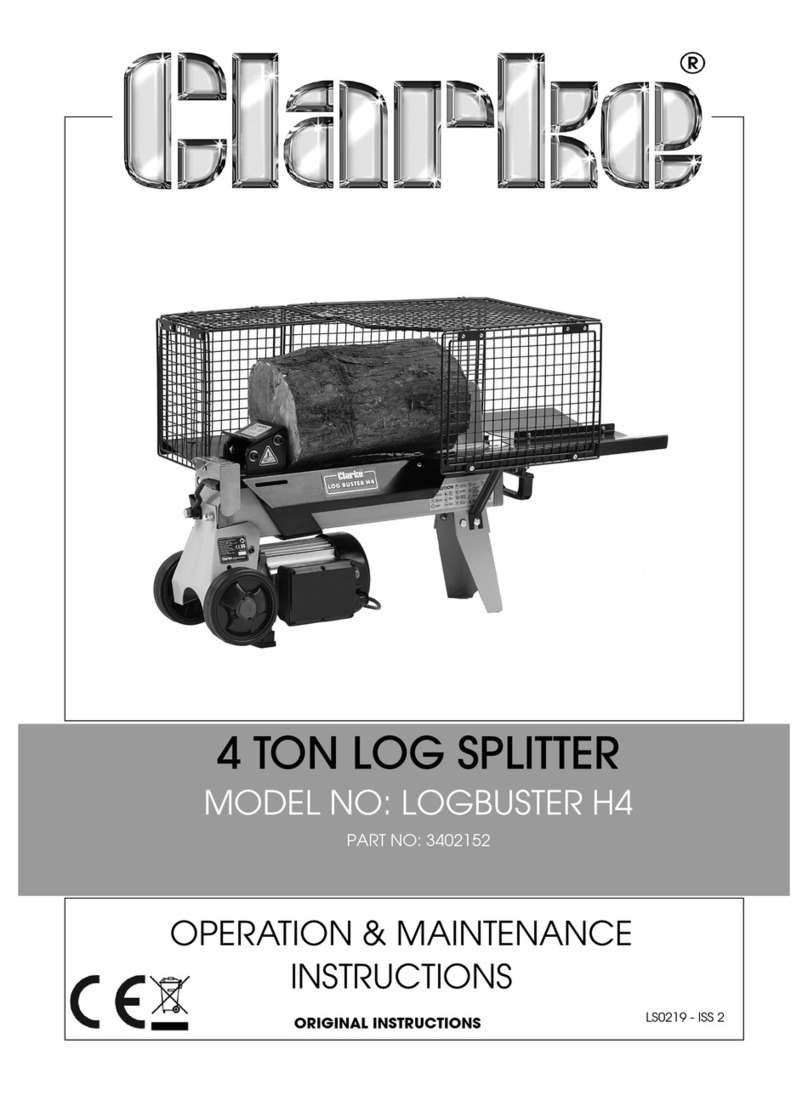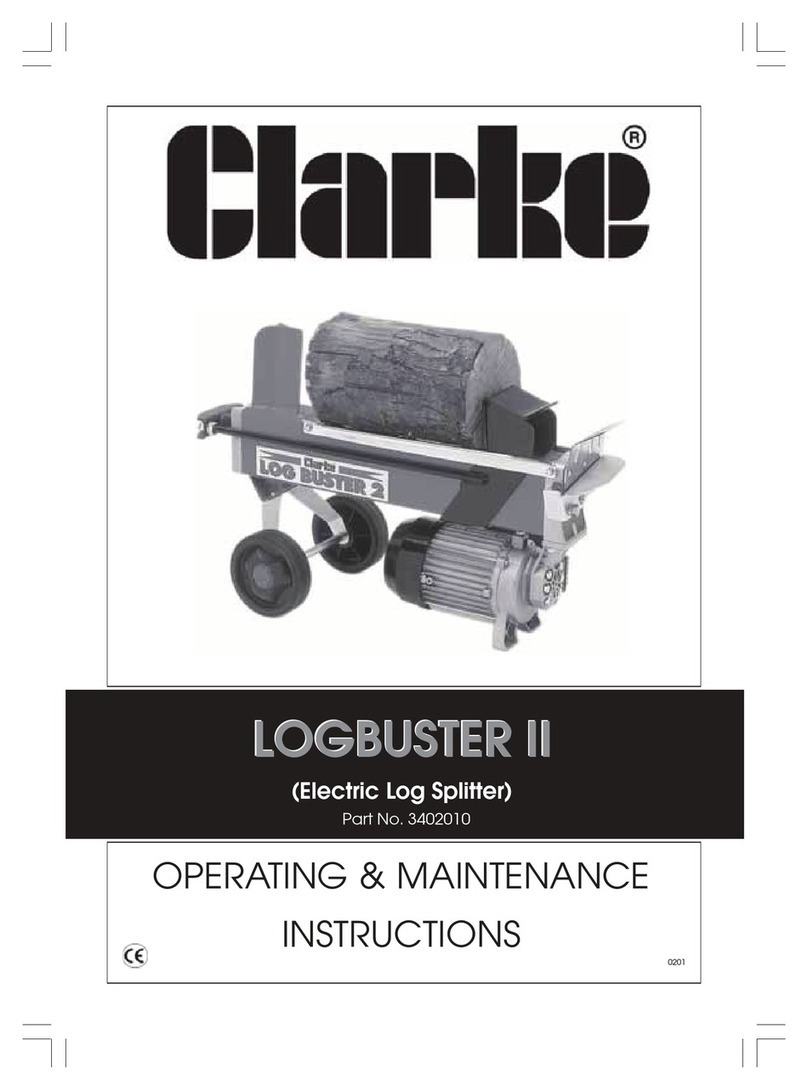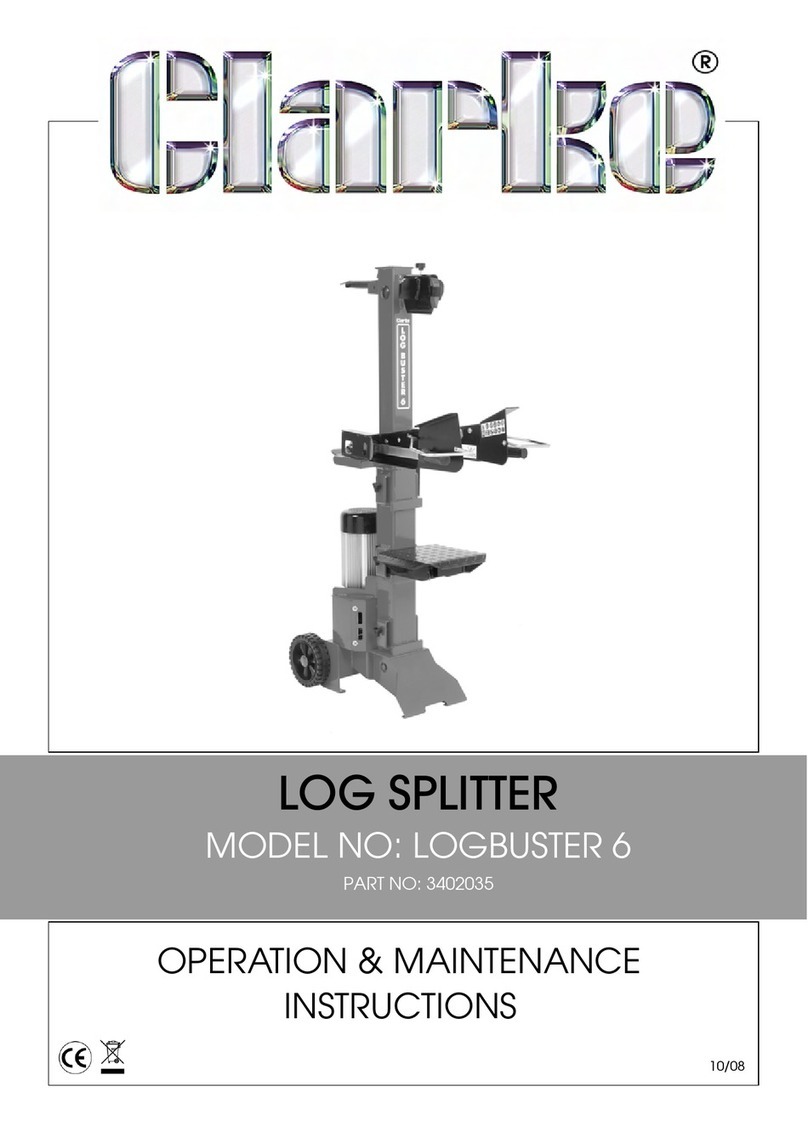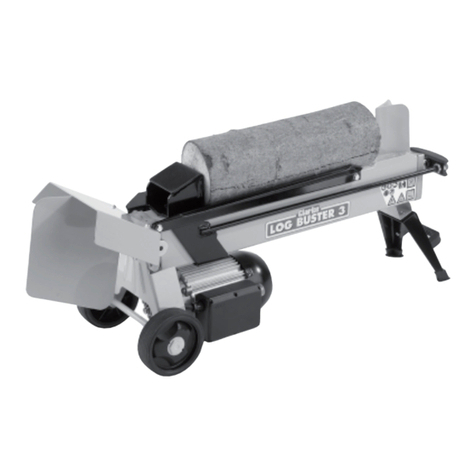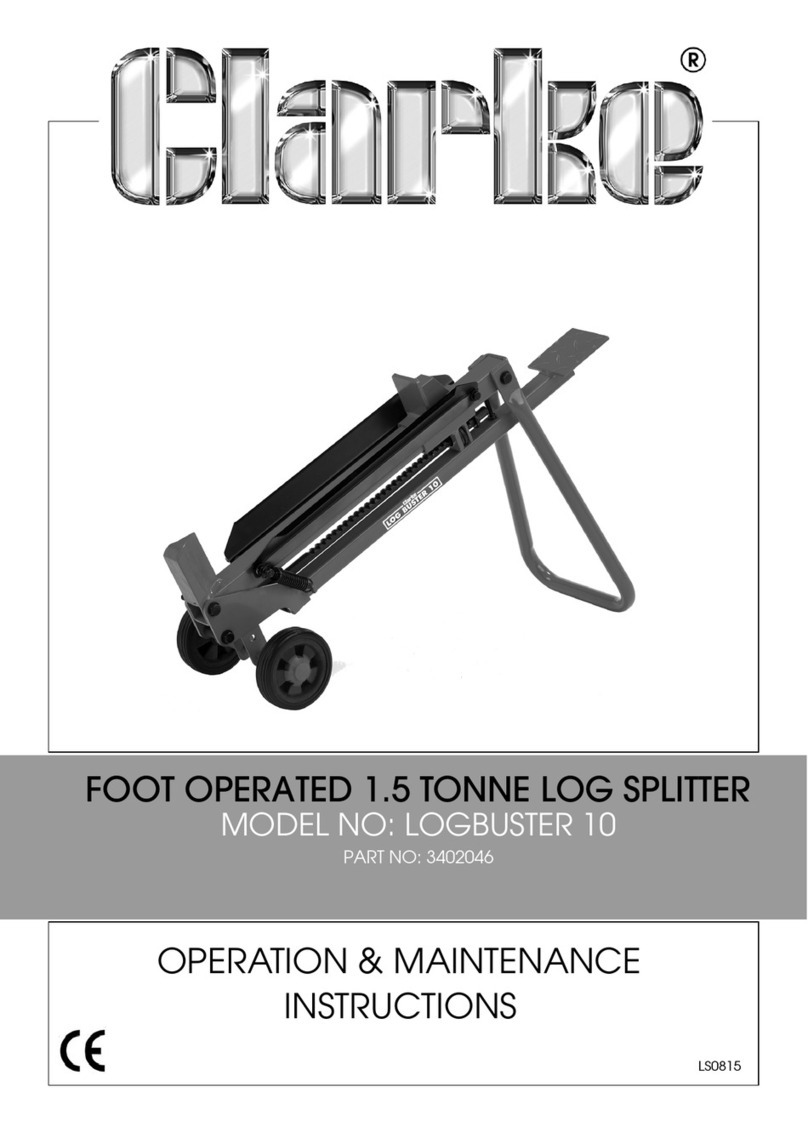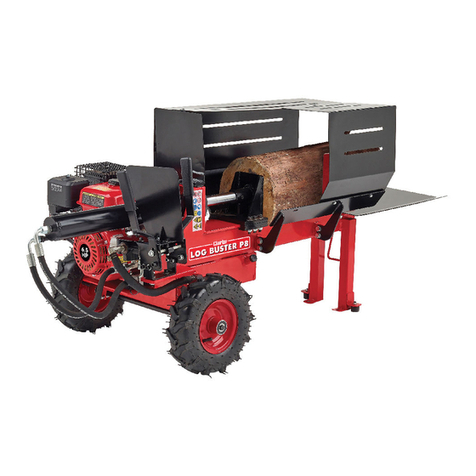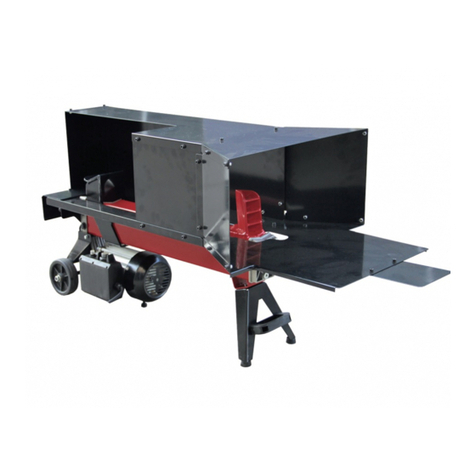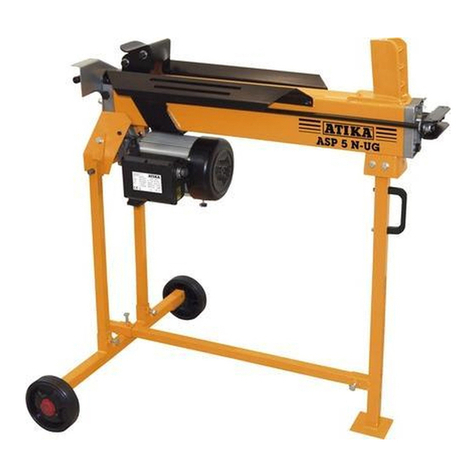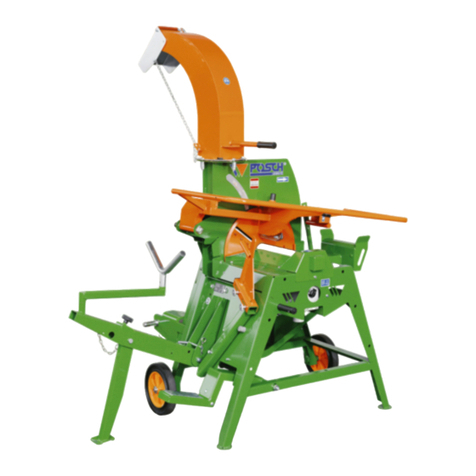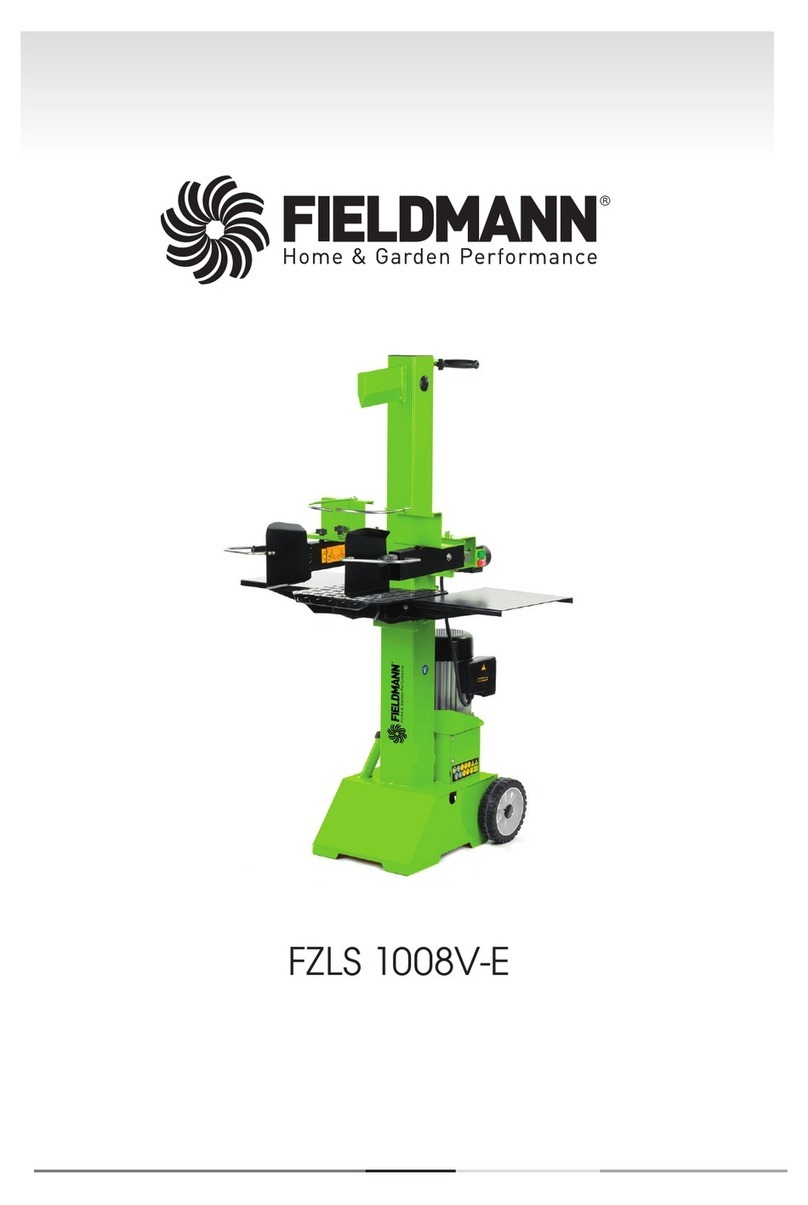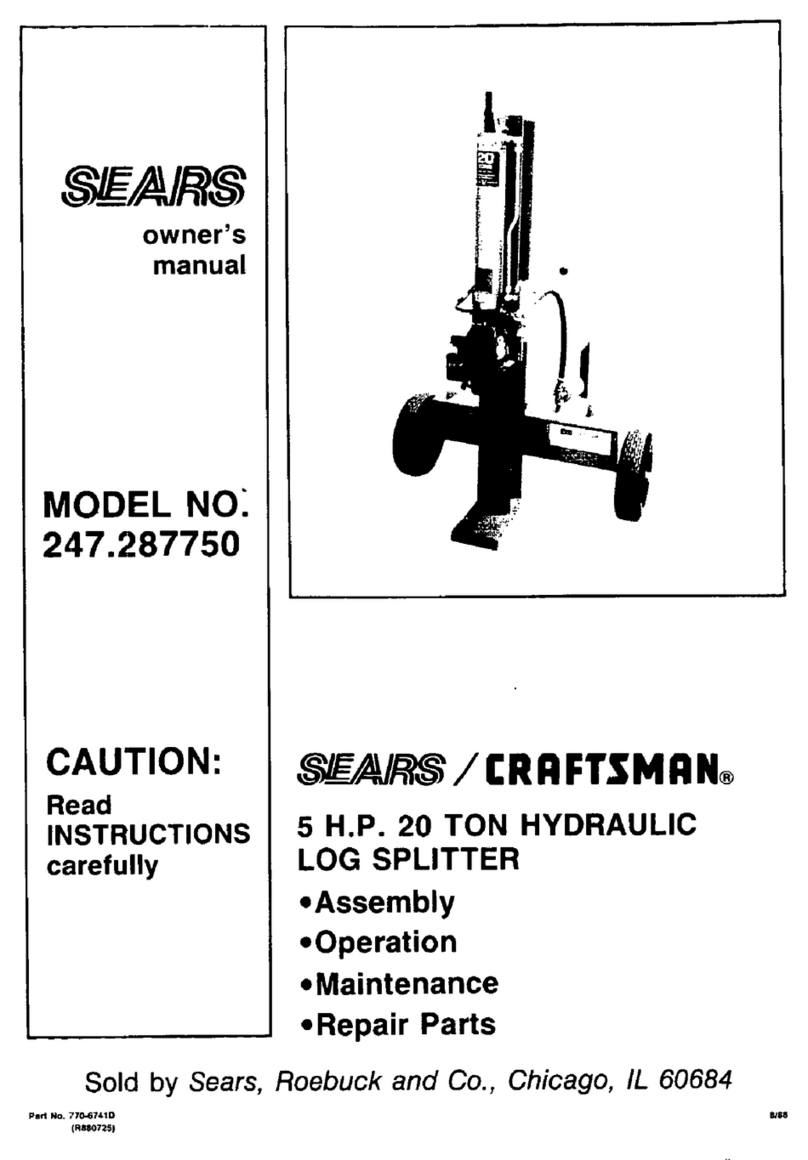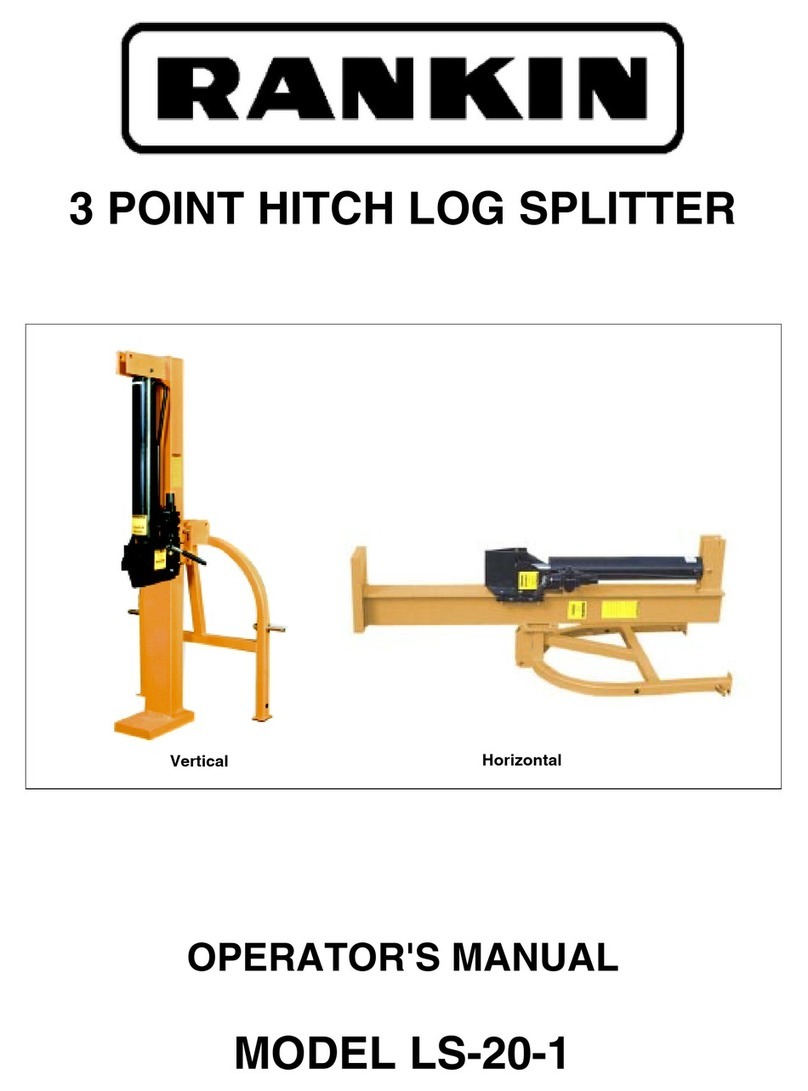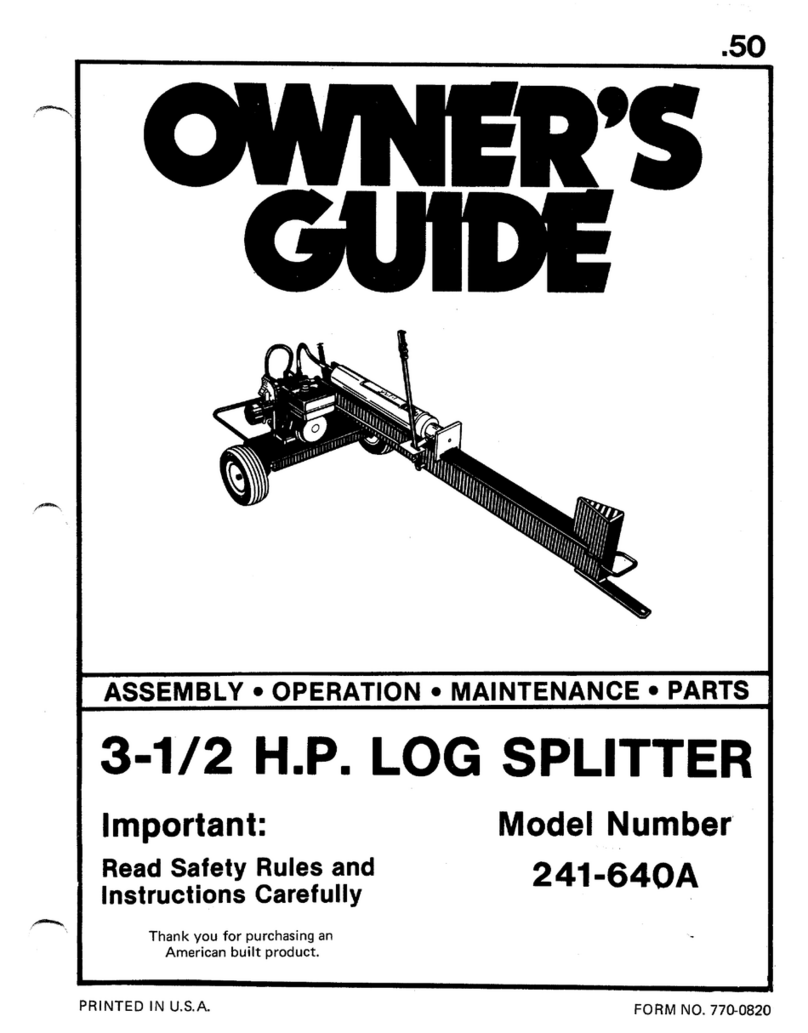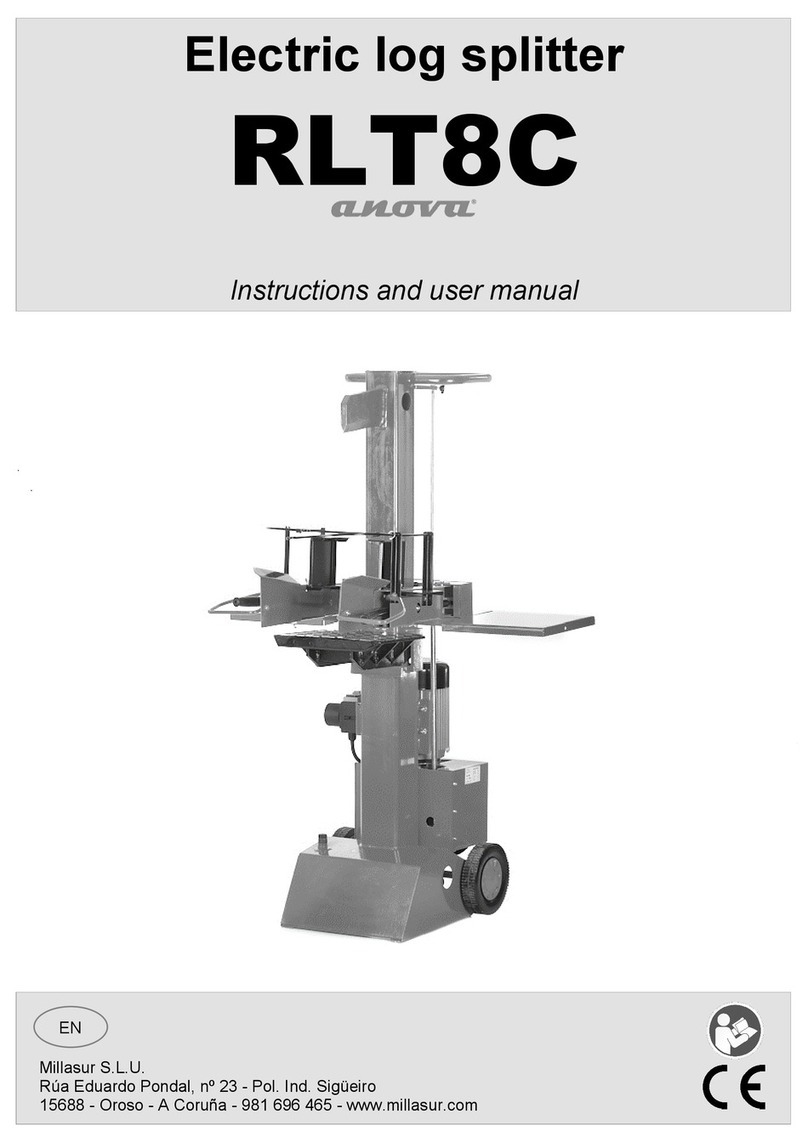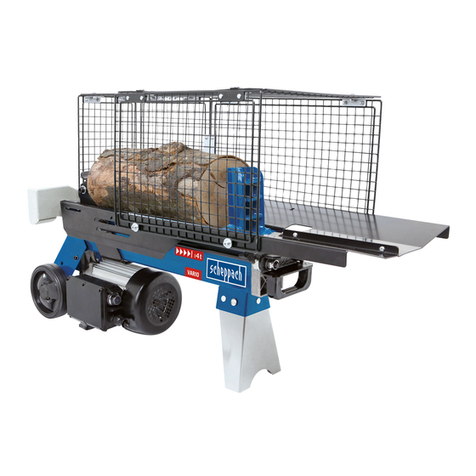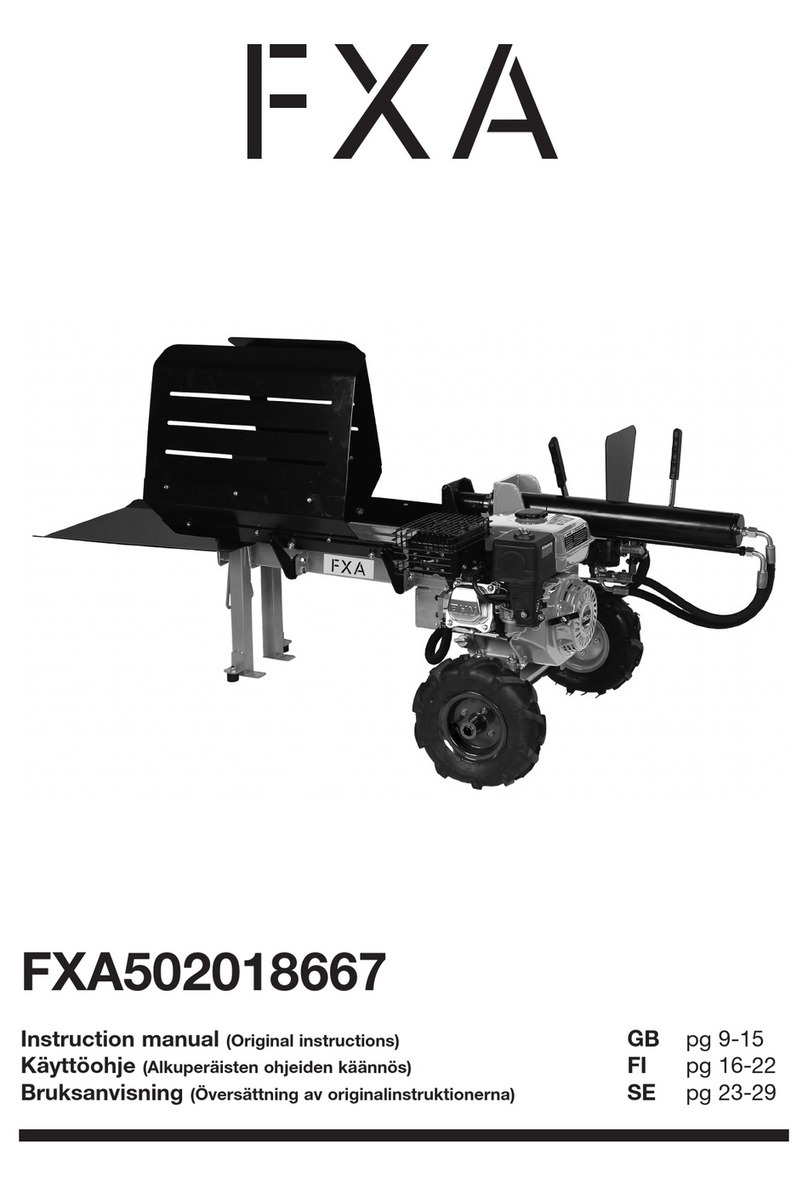Additional Precautions for Log Splitters
Extraspecial careisrequiredwhen using this powerfultooltosafeguard yourself and others
around you.
•Before using the log splitter, check for fluid leaks. Be sure the tool and the work area
around it is clean and free of oil spills. Hydraulic fluid can create hazards, causing you
to slip and fall, your hands to slip while using the machine, and it is also a potential fire
hazard.
•Hydraulic Systems: Never operate this tool if there is a potential hazard due to leaking
hydraulic fluid.
•Physical Hazards: The very nature of log splitting will produce splinters. When operating
log splitters, always ensure approved safety gloves, shoes, and eye protection is worn.
-5-
444mm
175mm
•NEVER tamper with the log splitter .
•NEVER try to split logs larger than those indicated in Fig. 1.
This could be dangerous and may damage the machine.
•Do not allow split logs to accumulate, always clean up as
you work, accumulated split logs and wood chips can
create a hazardous work environment.
•The operator must take all necessary precautions to minimise the risk of accidental
damage or injury due to wood being ejected from the machine.
•The surface must be perfectly level to prevent the machine from moving during
operation, and the area must be free from any objects that could prevent complete
freedom of movement for the operator whilst working.
•The machine must always be used by ONE OPERATOR ONLY. Nobody must be allowed
to use the log splitter unless they have read the instruction manual thoroughly and
have been instructed in its use. The machine must be used by adults only. Check that
the logs to be split are free from nails or wire, which may fly up or damage the machine.
•Split wood in the direction of the grain. Do not attempt to split a piece of wood across
the grain as this could seriously damage the machine.
•If the log moves away from the blade, retract the ram and rotate the log through 90O
and try again
•Keep your hands well away from any splits and cracks which open in the log; these
may close suddenly and crush your fingers.
•NEVER use the machine whilst under the influence of alcohol, drugs, medicines, or when
you are tired. A clear mind is essential for safety.
•Before starting work, check correct functioning of all the safety devices and check for
soundness of welded joints, securing nuts & bolts.
Figure 1 shows the maximum log size that can be split. Please note that the diameter of the
log is indicative: i.e. A small log can be difficult to split if it has knots or a particularly tough
fibre. On the other hand, if the wood has regular fibres, it is not difficult to split logs with
diameters greater than that shown. It is important NOT to persist if the log does not split fairly
easily as the pump may be damaged. This could occur when the machine is made to work
under maximum stress in an attempt to split excessively fibrous, knotty wood or wet, green
wood.
Fig.1
